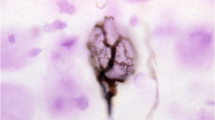Abstract
For the first time in the history of neuroscience, hearing allows to systematically investigate brain development with and without sensory experience in humans. This is given by the clinical success of the cochlear implant, a neuroprosthesis that can replace the non-functional inner ear. In recent years, auditory neuroscience investigated the neuronal mechanisms of learning, sensitive developmental periods and cross-modal reorganization in parallel in humans and animal models, with highly consistent outcomes. We learned that the brain undergoes a complex adaptation to deafness, both within and outside the auditory system. These adaptations reorganize the brain optimally to cope with deafness, but they negatively interfere with a later prosthetic therapy of hearing. They eventually close the sensitive developmental periods. The critical nature of sensitive periods is not only a consequence of a developmentally reduced synaptic plasticity but also the consequence of changes in central integrative functions and cognitive adaptations to deafness.




Similar content being viewed by others
References
Barone P, Lacassagne L, Kral A (2013) Reorganization of the connectivity of cortical field DZ in congenitally deaf cat. PLoS One 8(4):e60093
Busby PA, Tong YC, Clark GM (1992) Psychophysical studies using a multiple-electrode cochlear implant in patients who were deafened early in life. Audiology 31(2):95–111
Hochstein S, Ahissar M (2002) View from the top: hierarchies and reverse hierarchies in the visual system. Neuron 36:791–804
Illg A, von der Haar-Heise S, Goldring JE, Lesinski-Schiedat A, Battmer RD, Lenarz T (1999) Speech perception results for children implanted with the CLARION cochlear implant at the Medical University of Hannover. Ann Otol Rhinol Laryngol Suppl 177:93–98
Klinke R, Kral A, Heid S, Tillein J, Hartmann R (1999) Recruitment of the auditory cortex in congenitally deaf cats by long-term cochlear electrostimulation. Science 285(5434):1729–1733
Kral A (2013) Auditory critical periods: a review from system’s perspective. Neuroscience 247:117–133
Kral A, Eggermont JJ (2007) What’s to lose and what’s to learn: development under auditory deprivation, cochlear implants and limits of cortical plasticity. Brain Res Rev 56(1):259–269
Kral A, O’Donoghue GM (2010) Profound deafness in childhood. N Engl J Med 363(15):1438–1450
Kral A, Sharma A (2012) Developmental neuroplasticity after cochlear implantation. Trends Neurosci 35(2):111–22
Kral A, Hartmann R, Tillein J, Heid S, Klinke R (2000) Congenital auditory deprivation reduces synaptic activity within the auditory cortex in a layer-specific manner. Cereb Cortex 10(7):714–726
Kral A, Schroder JH, Klinke R, Engel AK (2003) Absence of cross-modal reorganization in the primary auditory cortex of congenitally deaf cats. Exp Brain Res 153(4):605–613
Kral A, Tillein J, Heid S, Hartmann R, Klinke R (2005) Postnatal cortical development in congenital auditory deprivation. Cereb Cortex 15:552–562
Kral A, Tillein J, Heid S, Klinke R, Hartmann R (2006) Cochlear implants: cortical plasticity in congenital deprivation. Prog Brain Res 157:283–313
Kral A, Heid S, Hubka P, Tillein J (2013) Unilateral hearing during development: hemispheric specificity in plastic reorganizations. Front Syst Neurosci 7:93
Kral A, Hubka P, Heid S, Tillein J (2013) Single-sided deafness leads to unilateral aural preference within an early sensitive period. Brain 136:180–193
Lomber SG, Meredith MA, Kral A (2010) Cross-modal plasticity in specific auditory cortices underlies visual compensations in the deaf. Nat Neurosci 13(11):1421–1427
Niparko JK, Tobey EA, Thal DJ, Eisenberg LS, Wang NY, Quittner AL et al (2010) Spoken language development in children following cochlear implantation. JAMA 303(15):1498–1506
Author information
Authors and Affiliations
Corresponding author
Additional information
This article was translated from German by Karin Moan, Leimen.
Further details, e.g. acoustic examples for filling-in phenomena and original publications are to be found on the web page www.neuroprostheses.com.
Rights and permissions
About this article
Cite this article
Kral, A., Lenarz, T. How the brain learns to listen: deafness and the bionic ear. e-Neuroforum 6, 21–28 (2015). https://doi.org/10.1007/s13295-015-0004-0
Published:
Issue Date:
DOI: https://doi.org/10.1007/s13295-015-0004-0



